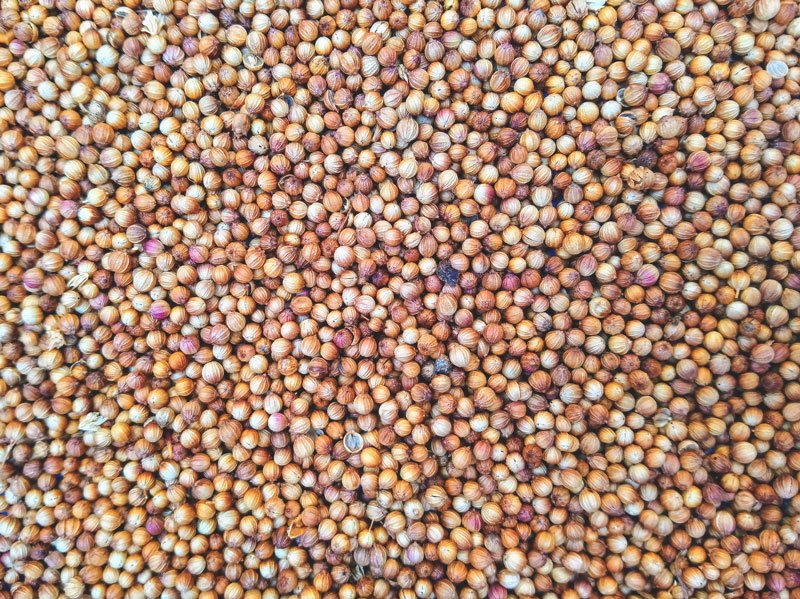The third favorite condiment of the French behind the iconic and inseparable duo of salt and pepper, mustard contributes to the reputation of French gastronomy throughout the world. So much so that President Obama himself asked the Air Force One cook to give him a taste of Dijon mustard. In a sauce or as is with a piece of meat, it is an obligatory presence during many meals. A real success made in France. Well, not really...
Consumed since Antiquity, mustard is not new to merchants' stalls or to the French diet. In fact, its recipe and method of production are not foreign to professionals in the sector. And the key ingredient for a successful mustard is mustard seeds. Yellow or brown, these seeds are the basic ingredient of any mustard but can also be eaten alone, to season meat or fish. They can also be used to prepare condiments such as pickles, onions or even cabbage and squash.
Having become famous thanks to the Dukes of Burgundy, the little yellow paste continues, six centuries later, to be the pride of an entire region. However, on closer inspection, it is possible to notice that the link between Dijon and mustard has weakened somewhat. Thus, more than 80% of the seeds needed to make mustard in France actually come from Canada and 15% arrive in containers from other foreign countries . Which, in the end, leaves little room for blue, white, red production.
COLLATERAL VICTIM OF THE SECOND WORLD WAR
A heresy for defenders of local production, even a lie for certain consumers feeling betrayed by the name Dijon , the reality of mustard seed production is more complex than that. To understand today's situation, it is necessary to go back a few years, to the end of the Second World War. At this time, mustard cultivation experienced a serious slowdown, due to a desire to encourage the development of oilseed crops such as rapeseed and sunflower. This turnaround, which is to the detriment of mustard, is partly explained by the fact that during the 39-45 war, the shortage of fat had a profound impact on people's minds. A desire for plants rich in fat reinforced by the difficulties of peanut exporting countries at the same time.
The other explanation for replacing the cultivation of mustard seeds in favor of rapeseed, sunflower or even wheat is more economical. Indeed, the abandonment of these small beads of one to two millimeters in diameter also results from its non-subsidized nature. Not eligible for European aid, mustard seeds are leaving their ancestral lands and the food industry will begin to cross the Atlantic Ocean to obtain mustard seeds and prepare its many recipes.
AN IGP, NO AOP
Is a Dijon mustard that doesn't come from Dijon, or even Burgundy, possible?
Yes, because this flagship product of French gastronomy is not protected by an Appellation d'Origine Contrôlée (AOP). The term "Dijon mustard" is therefore not legally protected and anyone, anywhere in the world can claim to produce Dijon mustard, without anything linking it to the Côte d' prefecture. Gold or its region.
However, since 2000, there has been a decree which regulates this name but the latter does not protect an origin and a terroir but a recipe, a manufacturing process.
A nuance that benefits large global industrial groups. Thus, the Dutch-British giant Unilever (Amora, Calvé etc.) alone holds 90% of the mustard market in France and in mass distribution.
Since 2011, however, there has been a Protected Geographical Indication (PGI) for “Burgundy Mustard”. This European label guarantees consumers that the production of the mustard seeds, but also that of the white wine necessary for the recipe, as well as their processing takes place in Burgundy. A first sign of recognition for a quality condiment.

THE CHANGE IS NOW !
This official European acronym is a desire of an entire region to reclaim its territory and its products. It is also a sign of renewal and a desire to work with local seeds. The time has not yet come for 100% local production as the needs for seeds are immense for mustard factories in the Burgundy region: around 25,000 tonnes per year, or the equivalent of 15,000 hectares. Currently, 6,000 hectares of land are dedicated to growing mustard seeds in Burgundy. Not enough to provide everyone but, considering its virtual disappearance just a few decades ago, this return to the forefront is a nice victory.
A victory that is not limited to Burgundy. In fact, around ten regions are now participating in the relocation of mustard seed cultivation. In Ardèche, in Charente, in Limousin or even in Allier, in Beauce and even in Champagne.
A first step which must lead to others and for which everyone has a role to play.
THE INCREDIBLE MUSTARD WITH LIMOUSIN MUSTARD SEEDS!
A real Dijon mustard!
Our seeds come from Limousin, a region which actively participates in the revitalization of mustard made in France. Since 2014, the Limousin fields have been an ideal host land for the production of quality mustard seeds. Flawless for our Incredible organic mustard without any suspect ingredients: no preservatives or other additives.
REAL FRENCH SAUCES
It is precisely because the origin of our products is an absolute priority and feeding you better is our daily leitmotif that all our mustard-based sauces are prepared from seeds that have grown in France, in Limousin! And there are few of them in France!
It is even the only 100% French organic mustard mayonnaise . Incredible isn't it?
Because it is important to remember that mustard has many unsuspected health benefits, such as the prevention of bladder cancer, activation of blood circulation as well as a significant number of nutrients and vitamins, and that it would be a shame to thwart them with poor quality components.
